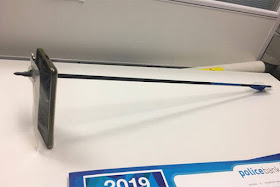Inuit Archery holds a significant place in the history and culture of the Indigenous Inuit people of the Arctic regions, including present-day Alaska, Canada (Northwest Territories, Nunavut, and Nunavik), Greenland, and Siberia. For thousands of years, archery has been an essential skill for Inuit hunters, providing them with a means of sustenance and survival in the harsh Arctic environment.
Inuit archery traces its roots back over 4,000 years when the first Inuit cultures began to emerge in the Arctic. Early Inuit hunters developed innovative techniques to craft bows and arrows using the limited resources available in their environment.Bow-Making Process:
Traditionally, Inuit bows are made from a single piece of wood obtained from the surrounding landscape, typically driftwood, which is lightweight and durable. The most commonly used wood species for Inuit bows include yew, willow, or spruce, chosen for their flexibility and resilience. The bow-making process involves several steps:
Wood Selection: Inuit bowyers carefully select a suitable piece of driftwood, considering its shape, size, and flexibility. The wood must have minimal knots or defects to ensure the integrity of the bow.
Seasoning the Wood: Before shaping the bow, the wood is often seasoned by drying it for an extended period, sometimes up to several years. This process prevents the bow from warping or cracking over time.
Shaping the Bow: Using traditional hand tools like bone knives and stone scrapers, the bowyer skillfully carves the bow into its distinctive shape. The bow is usually reflexed or reflex-deflexed, meaning that it curves slightly forward or backward, respectively.
Tillering: The tillering process involves carefully bending the bow and testing its flexibility to ensure an even distribution of tension along the length of the bow. Bowyers remove material from specific areas to achieve the desired draw weight and curve.
Arrow-Making Process:
Inuit arrows are meticulously crafted to ensure accuracy and lethality. The process of making Inuit arrows involves the following steps:
Shaft Selection: The arrow shafts are crafted from various materials, such as river reeds, bird bones, or driftwood. Like the bow, the arrow shaft must be straight and free from imperfections.
Fletching: Inuit arrows are usually fletched with three feathers, which can come from various bird species, including ptarmigans, ducks, or seagulls. The feathers are carefully attached to the shaft to provide stability and accuracy during flight.
Arrowhead: The arrowhead is crucial for hunting success. Inuit hunters traditionally fashioned arrowheads from bone, antler, or stone. The arrowhead is meticulously shaped to create a sharp point, ensuring efficient hunting.
Binding: The arrowhead is securely fastened to the shaft using sinew, a strong and flexible material made from animal tendons. Sinew binding provides durability and allows for easy repair or replacement of arrowheads.
Cultural Significance and Continuation:
Inuit archery is more than just a practical skill; it holds deep cultural significance among the Inuit communities. Archery has been passed down through generations, with elders teaching younger members of the community the art of bow-making, arrow crafting, and hunting techniques.
Despite the availability of modern hunting tools, many Inuit hunters still practice traditional archery to preserve their cultural heritage and maintain a connection with their ancestors. Inuit archery competitions and festivals celebrate the skills and prowess of the archers, showcasing the rich cultural traditions that have stood the test of time.
Inuit archery is a time-honored tradition deeply rooted in the Arctic regions. Through the centuries, Inuit bowyers have skillfully crafted bows and arrows using materials readily available in their environment, enabling Inuit hunters to thrive in one of the most challenging environments on Earth. The continuation of Inuit archery serves as a testament to the resilience and enduring cultural heritage of the Inuit people.







